france
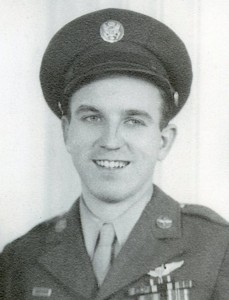 It’s hard for me to think about D-Day, without wondering what things were going through my dad, Allen Spencer’s mind on that day. Each branch of the military had their own part to play and each was in much danger. I suppose it’s possible that the men on the ground were in the most danger, but in reality, anyone who was involved that day faced grave danger. Soldiers could be shot and killed, ships could be sunk, and planes could be shot down. No matter how the attack came, death was often the result, and in battle it was inevitable.
It’s hard for me to think about D-Day, without wondering what things were going through my dad, Allen Spencer’s mind on that day. Each branch of the military had their own part to play and each was in much danger. I suppose it’s possible that the men on the ground were in the most danger, but in reality, anyone who was involved that day faced grave danger. Soldiers could be shot and killed, ships could be sunk, and planes could be shot down. No matter how the attack came, death was often the result, and in battle it was inevitable.
My dad was a young man of just 20 years. That is the age of my two oldest grandchildren, and I simply cannot imagine either of them being in that position. Of course, they could handle it, because twenty year olds have been fighting wars for as long as wars have been fought. It is me, and my mind, that can’t wrap itself around the idea of them being in an airplane providing air support over a battlefield. For my dad, every mission held an adrenalin rush, a degree of excitement, and a large degree of dread, mixed with the need to push back fear. Flying in the B-17G Bomber was an exciting thing for him, but unfortunately it had to  be mixed with the reality of the fact that those bombs were killing people…even if they were the enemy. They often had no say in the matter, they were an enemy of the Allied Forces simply because they lived in the country they did.
be mixed with the reality of the fact that those bombs were killing people…even if they were the enemy. They often had no say in the matter, they were an enemy of the Allied Forces simply because they lived in the country they did.
The air war was vastly different from the ground war, but that didn’t make either more of less dangerous. The Luftwaffe was not widely used on D-Day, but did come racing in over the following days. The weather was bad that first day, and that was definitely to the advantage of the Allied troops. Nevertheless, there were German forces involved, and without air support, they could not have pulled off the victory they did at Normandy. The planes that were there to provide air support, were basically magnets for the  Luftwaffe, and any other enemy forces on the ground. Flying over Normandy was not a task to be taken lightly. Their job was to keep the bombers, tanks, and other soldiers off of the ground troops. The men risked their lives every second that they were in the air. The men on the ground were so vulnerable, and it was imperative that they have good air cover to keep as much enemy fire off of them as possible. It was very clear that without the air support, D-Day would not have been possible.
Luftwaffe, and any other enemy forces on the ground. Flying over Normandy was not a task to be taken lightly. Their job was to keep the bombers, tanks, and other soldiers off of the ground troops. The men risked their lives every second that they were in the air. The men on the ground were so vulnerable, and it was imperative that they have good air cover to keep as much enemy fire off of them as possible. It was very clear that without the air support, D-Day would not have been possible.
I am very proud of the part my dad played in D-Day, as I am of men like my Uncle Jim Wolfe, who was one of those men on the ground on that fateful day. Their job was a very dangerous one, and many of them would not see the sun set that night, but they had a job to do, and so they went out to battle for the freedom of those who were oppressed by the evil that was Hitler. It is a battle we will never forget, nor will we forget the men who fought there, especially those who gave all.
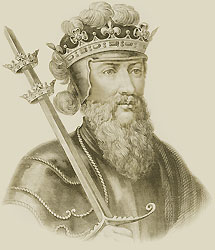 Before scientists learned how to predict the weather, and before the weather predicting equipment came into being, people often found themselves outside, without any place to get under cover, during some really bad storms. Such was the case on Monday, April 13, 1360…later dubbed Black Monday, when a hail storm killed approximately 1,000 English soldiers in Chartres, France. England and France were in the middle of the Hundred Years’ War. The war began in 1337, and by 1359, King Edward III of England was pushing forward to conquer France. In October he sent a massive force across the English Channel to Calais. The French wouldn’t fight back, but rather stayed behind protective walls that Winter, allowing the King Edward’s men to pillage the countryside.
Before scientists learned how to predict the weather, and before the weather predicting equipment came into being, people often found themselves outside, without any place to get under cover, during some really bad storms. Such was the case on Monday, April 13, 1360…later dubbed Black Monday, when a hail storm killed approximately 1,000 English soldiers in Chartres, France. England and France were in the middle of the Hundred Years’ War. The war began in 1337, and by 1359, King Edward III of England was pushing forward to conquer France. In October he sent a massive force across the English Channel to Calais. The French wouldn’t fight back, but rather stayed behind protective walls that Winter, allowing the King Edward’s men to pillage the countryside.
Then in April of 1360 King Edward’s forces burned the Paris suburbs and marched  toward Chartres. The night of April 13, while they were camped outside the town, planning a dawn attack, a sudden storm developed. Lightning struck, killing several soldiers, and hailstones began pelting the men, and scattering the horses. One man described it as “a foul day, full of myst and hayle, so that the men dyed on horseback” Two of the English leaders were killed and the troops panicked…they had no shelter from the storm. They were at it’s mercy. King Edward’s forces suffered heavy losses that some of the men saw as a sign from God, that they should not be fighting against France. King Edward was convinced that they needed to negotiate peace with the French, and on May 8, 1360, the Treaty of Bretigny was signed, marking the end of the first phase of the Hundred Years’ War. King Edward renounced all claims to the throne of France, but he was given control of the land in the north of the country. Nine years later, fighting resumed
toward Chartres. The night of April 13, while they were camped outside the town, planning a dawn attack, a sudden storm developed. Lightning struck, killing several soldiers, and hailstones began pelting the men, and scattering the horses. One man described it as “a foul day, full of myst and hayle, so that the men dyed on horseback” Two of the English leaders were killed and the troops panicked…they had no shelter from the storm. They were at it’s mercy. King Edward’s forces suffered heavy losses that some of the men saw as a sign from God, that they should not be fighting against France. King Edward was convinced that they needed to negotiate peace with the French, and on May 8, 1360, the Treaty of Bretigny was signed, marking the end of the first phase of the Hundred Years’ War. King Edward renounced all claims to the throne of France, but he was given control of the land in the north of the country. Nine years later, fighting resumed  when the King of France claimed that King Edward had not honored the treaty. the last phase of the Hundred Years’ War finally ended in 1453.
when the King of France claimed that King Edward had not honored the treaty. the last phase of the Hundred Years’ War finally ended in 1453.
Hailstones have long been known to be very deadly. The larger the stone, of course, the more deadly it is. Some have been known to crush the roofs of cars. The largest hailstone recorded in modern times was found in Aurora, Nebraska. It was seven inches in diameter, about the size of a soccer ball. Hail typically falls at about 100 miles per hour, which explains why getting hit with one can really hurt you, no matter how small the stone might be, and why huge hailstones would mean instant death.
 Since my dad was stationed in England during World War II, and because many of my ancestors come from England, I am interested in all things English. Of course, that doesn’t mean that I know everything about England, and I think it would be pretty difficult to do that with any country, including the country I live in…the United States. That said, I learned something about England today. England is an island nation as most people know, and that can make travel to mainland Europe difficult and expensive. Travel to Hawaii would be a good example of that, and Hawaii isn’t even it’s own nation. Nevertheless, most of us have to save up our money to make the trip to Hawaii.
Since my dad was stationed in England during World War II, and because many of my ancestors come from England, I am interested in all things English. Of course, that doesn’t mean that I know everything about England, and I think it would be pretty difficult to do that with any country, including the country I live in…the United States. That said, I learned something about England today. England is an island nation as most people know, and that can make travel to mainland Europe difficult and expensive. Travel to Hawaii would be a good example of that, and Hawaii isn’t even it’s own nation. Nevertheless, most of us have to save up our money to make the trip to Hawaii.
So, what does that have to do with England, you might ask. Well…everything. While an alternate mode of transportation to get to Hawaii…other than ship or plane, is not feasible for Hawaii…for England, maybe it could be. As early as the days of Napoleon Bonaparte, in 1802, people were looking for a way to connect England to France. Nothing came of those early suggestions, because the necessary technology was not available until the 20th century. The proposal was that since England and France were no longer at war, they should permanently connect their countries by way of a tunnel. The Channel Tunnel, later dubbed the Chunnel runs from Folkestone, England to Calais, France. The tunnel is 31 miles across, but in total there are 95  miles of tunnels. There are two railway tunnels, and a service tunnel. The work began on in 1986, and took four years to connect the two sides. Approximately 13,000 workers dug the 95 miles of tunnels at an average depth of 150 feet below sea level. Eight million cubic meters of soil were removed, at a rate of about 2,400 tons per hour. When it was finished, the Chunnel would have three interconnected tubes, including one rail track in each direction and one service tunnel. It cost $15 billion to complete.
miles of tunnels. There are two railway tunnels, and a service tunnel. The work began on in 1986, and took four years to connect the two sides. Approximately 13,000 workers dug the 95 miles of tunnels at an average depth of 150 feet below sea level. Eight million cubic meters of soil were removed, at a rate of about 2,400 tons per hour. When it was finished, the Chunnel would have three interconnected tubes, including one rail track in each direction and one service tunnel. It cost $15 billion to complete.
Most of us don’t give much thought to tunnels, but when it comes to underwater tunnels…well, that is just different. Of course, we all know of the Holland Tunnel that connects New York and New Jersey, but that tunnel isn’t nearly as long as the Chunnel. The Holland Tunnel is a little over a mile and a half, which pales by comparison to the Chunnel’s 31 miles. On December 1, 1990, after four long years of work, the two sides of the Chunnel were connected. Workers exchanged French and British flags and toasted each other with champagne. It was a great day. The Channel Tunnel finally opened for passenger service on May 6, 1994, with Britain’s Queen Elizabeth II and France’s President Francois Mitterrand on hand in Calais for the inaugural run. A company called Eurotunnel won the 55 year contract to operate the Chunnel, which is the crucial stretch of the  Eurostar high speed rail link between London and Paris. The regular shuttle train through the tunnel runs 31 miles in total, with 23 of those underwater and it takes 20 minutes, with an additional 15 minute loop to turn the train around. The Chunnel is the second-longest rail tunnel in the world, after the Seikan Tunnel in Japan.
Eurostar high speed rail link between London and Paris. The regular shuttle train through the tunnel runs 31 miles in total, with 23 of those underwater and it takes 20 minutes, with an additional 15 minute loop to turn the train around. The Chunnel is the second-longest rail tunnel in the world, after the Seikan Tunnel in Japan.
Things like this fascinate me. I like the idea of something as unique as the Chunnel. I like the interesting fact that it is in England. And I like the fact that, the Chunnel is the longest underwater section, longest international tunnel, second-longest railway tunnel in the world. Some day, I hope to ride the train through that tunnel. Wouldn’t that be amazing?

 On August 13, 1961, in the hours just after midnight, the East German soldiers began laying down barbed wire and bricks as a barrier between Soviet-controlled East Berlin and the democratic western section of the city. It was a day that would change life in Berlin for the next twenty eight years. In the days that followed, a wall was built to permanently close off access to the west. The citizens of East Berlin became prisoners in their own homes and city, in a prison that was built around them. The road between East and West Berlin had become a one way street. If you wanted in, you couldn’t come back out. Families were separated from each other, and those in the West had to make the choice to go be with family in East Berlin…and captivity, or not. The wall became the symbol of the Cold War. It was a literal Iron Curtain, dividing Europe.
On August 13, 1961, in the hours just after midnight, the East German soldiers began laying down barbed wire and bricks as a barrier between Soviet-controlled East Berlin and the democratic western section of the city. It was a day that would change life in Berlin for the next twenty eight years. In the days that followed, a wall was built to permanently close off access to the west. The citizens of East Berlin became prisoners in their own homes and city, in a prison that was built around them. The road between East and West Berlin had become a one way street. If you wanted in, you couldn’t come back out. Families were separated from each other, and those in the West had to make the choice to go be with family in East Berlin…and captivity, or not. The wall became the symbol of the Cold War. It was a literal Iron Curtain, dividing Europe.
When World War II ended in 1945, Germany was divided into four Allied occupation zones. Berlin, the German capital, was likewise divided into occupation sectors, even though it was located deep within the Soviet occupation zone. The future of Germany was a source of contention. Disagreements brought tensions which grew when the United States, Britain, and France moved in 1948 to unite their occupation zones into a single autonomous entity known as the Federal Republic of Germany or West Germany. In response, the Soviet Union launched a land blockage of West Berlin in an effort to force the West to abandon the city. The United States and Britain responded with a massive airlift of food and supplies to West Berlin, and in May of 1949, the Soviet Union ended the blockade in defeat.
That didn’t remove the tensions that plagued the area, however. By 1961 the Cold War tensions were running high again. The East German people became very dissatisfied with life under the communist system. West Berlin was a gateway to the West and Democracy. Between 1949 and 1961, about 2.5 million East Germans fled East Berlin to West Germany. By August of 1961, East Germans were crossing into West Germany at a rate of 2,000 people per day. Many of the refugees were skilled laborers, professionals, and intellectuals, and their loss was having a devastating effect on the East German economy. The Soviets had to figure out a way to stop the exodus, and its devastating effect on the economy. Soviet leader Nikita Khruschev made the decision to close off access from East Berlin to West Berlin.
Then came the night of August 13, 1961. The citizens of East Berlin could no longer freely pass into West Berlin. The West was taken by surprise, and threatened a trade embargo against East Germany as a retaliatory measure. The Soviets responded that such a measure would bring new blockades. The West did nothing, and the East German authorities grew more and more bold. They began closing of more and more checkpoints between East and West Berlin. On August 15, they began replacing barbed wire with concrete. The wall was supposedly designed protect their citizens from the influence of decadent capitalist culture. In realty, it protected the East German authorities from scrutiny as they did what they wanted with out retaliation.
Once it was up, the only way for East Berliners to escape the oppression of their government was to take their chances to get across in whatever way they could dream up. People attempted escape by train, tight rope, zip lines, hot air balloons, through old tunnels, impersonating soldiers, a stolen tank, and swimming. Many of these attempts ended in death for the person attempting escape. It didn’t stop them. They were so determined to live freely. About 5,000 East Germans managed to escape across the Berlin Wall to the West, but the frequency of successful escapes dwindled as the wall was increasingly fortified. Thousands of East Germans were captured during attempted crossings and 191 were killed.
On June 12, 1987 President Reagan made his great “tear down this wall” speech, but the wall remained until 
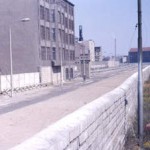 1989, when the democratization movement began sweeping across Eastern Europe. On November 9, 1989 travel restrictions were eased. Jubilant Berliners climbed on top of the Berlin Wall, painted graffiti on it, and removed fragments as souvenirs. The next day, East German troops began dismantling the wall. In 1990, East and West Germany were formally reunited. For those in the free world, it would be almost impossible to completely understand just what Communism was like, but those who lived it, would never forget it, if they even lived through it, which many didn’t.
1989, when the democratization movement began sweeping across Eastern Europe. On November 9, 1989 travel restrictions were eased. Jubilant Berliners climbed on top of the Berlin Wall, painted graffiti on it, and removed fragments as souvenirs. The next day, East German troops began dismantling the wall. In 1990, East and West Germany were formally reunited. For those in the free world, it would be almost impossible to completely understand just what Communism was like, but those who lived it, would never forget it, if they even lived through it, which many didn’t.
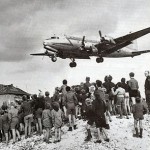 I think that every nation has opportunities to do what can be labeled as defining moments…situations when the nation dealt with an enemy or situation so well, that it can only be considered amazing. That was how the United States reacted to one of the most dramatic standoffs in the history of the Cold War. The Soviet Union decided to block off all road and rail traffic to and from West Berlin, Germany. The move was designed to basically starve the people into submission…or at least that was the plan. It was also a move that would be in defiance to all the other allies in Germany at the time. Unfortunately for the Soviet Union, the blockade turned out to be a horrible diplomatic move, but for the United States, it became a defining moment. The United States emerged from the confrontation with a renewed purpose and confidence, as well as a reputation for being a humanitarian nation.
I think that every nation has opportunities to do what can be labeled as defining moments…situations when the nation dealt with an enemy or situation so well, that it can only be considered amazing. That was how the United States reacted to one of the most dramatic standoffs in the history of the Cold War. The Soviet Union decided to block off all road and rail traffic to and from West Berlin, Germany. The move was designed to basically starve the people into submission…or at least that was the plan. It was also a move that would be in defiance to all the other allies in Germany at the time. Unfortunately for the Soviet Union, the blockade turned out to be a horrible diplomatic move, but for the United States, it became a defining moment. The United States emerged from the confrontation with a renewed purpose and confidence, as well as a reputation for being a humanitarian nation.
When World War II ended, Germany was divided into occupation zones. The United States, Great Britain, the Soviet Union, and eventually France were granted specific zones to occupy. Each nation was there to accept the surrender of Nazi forces and restore order. The Soviet Union occupied most of eastern Germany, and the other 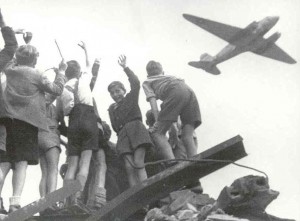 Allied nations occupied western Germany. The German capital of Berlin was divided into four sections as well. The differences between the United States and the Soviet Union were immediately evident. The Soviets were intent on thoroughly breaking the Germans…making them neutral and disarmed. Punishment was going to be at the top of the list. The United States saw things differently. They believed that the economic recovery of Western Europe depended of a strong, reunified Germany. The United States also felt that a rearmed Germany was going to be a stiff deterrent to further Soviet expansion into Western Europe. In May 1946, the Americans stopped reparations shipments from their zone to the Soviets. In December, the British and Americans combined their zones; the French joined some months later. The Soviets viewed these actions as a threat and issued more demands for more say in the economic future of Germany. On June 22, 1948, negotiations between the Soviets, Americans, and British broke down. On June 24, Soviet forces blocked the roads and railroad lines into West Berlin.
Allied nations occupied western Germany. The German capital of Berlin was divided into four sections as well. The differences between the United States and the Soviet Union were immediately evident. The Soviets were intent on thoroughly breaking the Germans…making them neutral and disarmed. Punishment was going to be at the top of the list. The United States saw things differently. They believed that the economic recovery of Western Europe depended of a strong, reunified Germany. The United States also felt that a rearmed Germany was going to be a stiff deterrent to further Soviet expansion into Western Europe. In May 1946, the Americans stopped reparations shipments from their zone to the Soviets. In December, the British and Americans combined their zones; the French joined some months later. The Soviets viewed these actions as a threat and issued more demands for more say in the economic future of Germany. On June 22, 1948, negotiations between the Soviets, Americans, and British broke down. On June 24, Soviet forces blocked the roads and railroad lines into West Berlin.
When the Soviets blocked the roads and railways, the Americans were furious. The question now became, what to do about it. Inside West Berlin there was panic. The people thought they were going to die. For a few tense 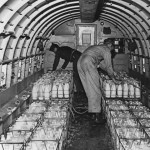 days, the world waited to see what the United States would do next. Then, just two days after the Soviets began the blockade, the United States reacted in a way that was so unexpected, and in the end, it would be a way that brought about that defining moment, and really set the stage for the humanitarian reputation the United States has today. A massive airlift of supplies was sent into West Berlin in what would become one of the greatest logistical efforts in history. For the Soviets, the escapade quickly became a diplomatic embarrassment. They looked like an international bully that was trying to starve men, women, and children into submission. The successful American airlift merely served to accentuate the technological superiority of the United States over the Soviet Union. On May 12, 1949, the Soviets officially ended the blockade.
days, the world waited to see what the United States would do next. Then, just two days after the Soviets began the blockade, the United States reacted in a way that was so unexpected, and in the end, it would be a way that brought about that defining moment, and really set the stage for the humanitarian reputation the United States has today. A massive airlift of supplies was sent into West Berlin in what would become one of the greatest logistical efforts in history. For the Soviets, the escapade quickly became a diplomatic embarrassment. They looked like an international bully that was trying to starve men, women, and children into submission. The successful American airlift merely served to accentuate the technological superiority of the United States over the Soviet Union. On May 12, 1949, the Soviets officially ended the blockade.
 My niece, Christina Masterson recently moved to Germany to live with her mother for a while. It is a wonderful opportunity for her to see the world, and still spend time with family. During the time she has been living in Germany, her family has traveled to France, as well as visiting many of the castles in Germany. I would love to have the opportunity to visit some of the places she is visiting, so I hope she knows what a blessing this is for her.
My niece, Christina Masterson recently moved to Germany to live with her mother for a while. It is a wonderful opportunity for her to see the world, and still spend time with family. During the time she has been living in Germany, her family has traveled to France, as well as visiting many of the castles in Germany. I would love to have the opportunity to visit some of the places she is visiting, so I hope she knows what a blessing this is for her.
Christina is just four days older than my grandson, Christopher Petersen, and five days older than my granddaughter, Shai Royce. The three mothers shared their entire  pregnancies…first for all three. It was a wild time. In fact, Christina’s mom, Angie almost had to leave her baby shower early to go have a baby. The funny thing was that the baby who was born last, my granddaughter, Shai was due first, and the baby that was born first, Christina was due last. Nevertheless, babies have their own timetables, and they are born when their time is right.
pregnancies…first for all three. It was a wild time. In fact, Christina’s mom, Angie almost had to leave her baby shower early to go have a baby. The funny thing was that the baby who was born last, my granddaughter, Shai was due first, and the baby that was born first, Christina was due last. Nevertheless, babies have their own timetables, and they are born when their time is right.
The three kids shared so much, but it was Christina and Shai who would become close friends. I’m sure it was because they were both girls and so they shared similar interests. For years, they were inseparable. I suppose that is what makes Christina’s move to Germany seem so strange. It’s not strange in that Christina moved, but rather that the girls wouldn’t be together anywhere near as much. That is odd, but you just don’t know what turns life will take you on. Not everyone knows what their life’s work  will be, and so trying out new things is important. I’m think that time will return Christina to the United States to stay, but you simply never know.
will be, and so trying out new things is important. I’m think that time will return Christina to the United States to stay, but you simply never know.
It is so hard for me to believe that Christina is nineteen years old today. I remember so vividly the days that her mom was pregnant with her, and her arrival. I remember so well her childhood, and all the time she and my granddaughter, Shai spent together, being crazy kids, and sometimes even driving all of us crazy with their antics. Now…suddenly, those days are over and before us stands a beautiful young lady. She is making new friends, and she has become a world traveler. I can’t believe how much has changed. She has so much potential and so much life ahead of her, and it will be exciting to see what her future brings. I know that is will be wonderful in every way. Today is Christina’s 19th birthday. Happy birthday Christina!! We miss you, because you are so far away. Have a great day!! We love you!!
 My Uncle Jim Richards has always been a soft spoken man. To me he always seemed shy, and maybe he is, but over the last year, have come across information that has made me realize that while he might have been shy, he was also a very strong man…a man of deep convictions, who valued has family and took care of them when they needed it the most. I can’t imagine growing up without my dad, and yet when Uncle Jim’s dad died, an eight year old Uncle Jim stepped up to the plate, and did his very best to fill the shoes his dad had left behind. I’m sure that at first the whole head of the household thing seemed almost cute to his mom, but as the years went on, and he continued to show a leadership ability far beyond his years, his mother learned to depend on this son who was the man of the house before he was even old enough to be a man. He proved himself to be the person everyone could count on.
My Uncle Jim Richards has always been a soft spoken man. To me he always seemed shy, and maybe he is, but over the last year, have come across information that has made me realize that while he might have been shy, he was also a very strong man…a man of deep convictions, who valued has family and took care of them when they needed it the most. I can’t imagine growing up without my dad, and yet when Uncle Jim’s dad died, an eight year old Uncle Jim stepped up to the plate, and did his very best to fill the shoes his dad had left behind. I’m sure that at first the whole head of the household thing seemed almost cute to his mom, but as the years went on, and he continued to show a leadership ability far beyond his years, his mother learned to depend on this son who was the man of the house before he was even old enough to be a man. He proved himself to be the person everyone could count on.
Just a year before his dad’s passing, while the nation was in the middle of World War II, Uncle Jim found himself the younger brother of a war hero who had been killed in action while storming the beaches of Normandy, France…his brother, Dale Richards. There was not much that a young boy of seven years could do to ease the pain his parents felt, and there was not enough money to bring his brother home, so he was buried in Normandy along with many other war dead. I can’t imagine the pain that must have inflicted on the family, and how one seven year old boy felt helpless to stop the hurting that had come upon his family. Then to add to the pain, his dad passed away just one year later. The sadness must have been overwhelming for them. I think too, that it probably shaped Uncle Jim’s life into the kind of life it was…one of close family ties, and helping each other whenever possible.
I don’t know if Uncle Jim will ever be able to go over to France and visit the grave of his war hero brother, but after hearing about the facts surrounding the loss of his brother, I set out to find out what I could. I didn’t have very much to go on…just his name, but before long, with the help of Aunt Sandy Pattan, Ancestry.com and Findagrave.com, I found what I was looking for…the location of the grave of Dale Richards, and even better, a picture of his grave. At the family Christmas party, I was able to give that picture to Uncle Jim. It was an 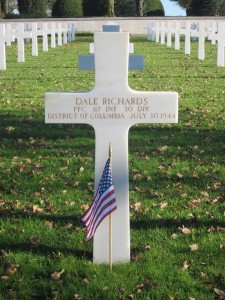 emotional moment for his whole family, and I was so happy to be able to give him that gift, because he was such a sweet man who had done so much for so many others, asking nothing for himself. The picture will never replace the loss of his brother and dad all those years ago, but for the man that had become my uncle, I hope it was a comfort, because his brother’s grave is in a beautiful, well kept honorable place, and I’m sure that is just what Uncle Jim would want for his brother.
emotional moment for his whole family, and I was so happy to be able to give him that gift, because he was such a sweet man who had done so much for so many others, asking nothing for himself. The picture will never replace the loss of his brother and dad all those years ago, but for the man that had become my uncle, I hope it was a comfort, because his brother’s grave is in a beautiful, well kept honorable place, and I’m sure that is just what Uncle Jim would want for his brother.
Uncle Jim will always be a quiet, soft spoken man, who carries a big load on his shoulders. It’s not that his life these days is so hard, but rather that he is the family patriarch…a lot like my dad was. The family looks to him for leadership, guidance, and emotional support. When things go wrong, he shows them the way to go, and when all is well, they all share in the joy of it together. Today is a day of joy. Today is Uncle Jim’s birthday. Happy birthday Uncle Jim!! Have a wonderful day!! We love you!!
 On June 17, 1885…129 years ago today, the Statue of Liberty, in a dismantled form, arrived in New York Harbor. It was a gift from France to commemorate our friendship with them during the American Revolution. While the Statue of Liberty would not be officially assembled and dedicated until October 8th, 1886, this was it’s official arrival. The Statue of Liberty’s 300 copper pieces packed in 214 crates were transported on the French ship “Isere” to America. Although the ship nearly sank in rough seas, it arrived in New York on June 17, 1885. The Statue’s parts remained unassembled for nearly a year until the pedestal was completed in 1886. What really shocks me is that there were only 350 parts to make up the Statue of Liberty. That seems impossible. Having been to, and inside the Statue of Liberty, I know how big it is. I would have guessed more like 1000 pieces. Today Lady Liberty has become known around the world as an enduring symbol of freedom and democracy.
On June 17, 1885…129 years ago today, the Statue of Liberty, in a dismantled form, arrived in New York Harbor. It was a gift from France to commemorate our friendship with them during the American Revolution. While the Statue of Liberty would not be officially assembled and dedicated until October 8th, 1886, this was it’s official arrival. The Statue of Liberty’s 300 copper pieces packed in 214 crates were transported on the French ship “Isere” to America. Although the ship nearly sank in rough seas, it arrived in New York on June 17, 1885. The Statue’s parts remained unassembled for nearly a year until the pedestal was completed in 1886. What really shocks me is that there were only 350 parts to make up the Statue of Liberty. That seems impossible. Having been to, and inside the Statue of Liberty, I know how big it is. I would have guessed more like 1000 pieces. Today Lady Liberty has become known around the world as an enduring symbol of freedom and democracy.
Having been to the Statue of Liberty, I find it very interesting to think that it arrived here 129 years ago today. I don’t know how many of you have been inside the statue, or how far up you were able to go, but I have been to the crown. I was very disappointed that we could not go to the torch, but for safety reasons, the torch has been closed to visitors since 1916, after an incident called the Black Tom explosions in which munitions-laden barges and railroad cars on the Jersey City, New Jersey, waterfront were blown up by German agents, causing damage to the nearby statue. That was something I didn’t know, and sadly there was nothing that would change it, but I was inside the Statue of Liberty, and it was so amazing…like a dream, not a reality!! I know that lots of people have been there and lots have been inside, and lots have even been to the crown, but I had not…and then I had…and, it was surreal!!
When I think about all the people who have sailed past this statue as they came to their new  home…and how many of them were my ancestors or Bob’s ancestors, it is just mind boggling. If she could talk…what stories could she tell. The Statue of Liberty has seen so much. Ships have come and gone, immigrants have arrived, the city has changed…and been attacked. What stories she could tell of happiness, sadness, floods, hurricanes, and terrorism. She has seen the transformation of her near neighbor from the location of Fort Gibson, to the current site of the Ellis Island Immigrant Station. She watched the planes fly into the World Trade Center…and their fall. When I think about all the changes that have taken place in our nation since Lady Liberty arrived, I wish she could speak, because the stories she could tell of our nation’s history would be amazing.
home…and how many of them were my ancestors or Bob’s ancestors, it is just mind boggling. If she could talk…what stories could she tell. The Statue of Liberty has seen so much. Ships have come and gone, immigrants have arrived, the city has changed…and been attacked. What stories she could tell of happiness, sadness, floods, hurricanes, and terrorism. She has seen the transformation of her near neighbor from the location of Fort Gibson, to the current site of the Ellis Island Immigrant Station. She watched the planes fly into the World Trade Center…and their fall. When I think about all the changes that have taken place in our nation since Lady Liberty arrived, I wish she could speak, because the stories she could tell of our nation’s history would be amazing.
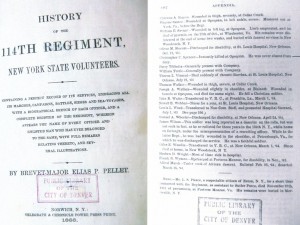 I have never had to experience the horror of a knock at the door, by a telegraph or phone call or military personnel, bring the most awful new a parent could possibly receive…their child has been killed in action. I can only imagine how the family felt after hearing that news…the feeling of having your heart literally ripped out of your chest…knowing that nothing in your life will ever be the same. The parents will now have to bury their child, and no parent should ever have to do that…for any reason. I have to think that sleep will be very hard to come by after that, because every time they close their eyes they will see their child in the middle of a battle and that moment when their child will lose that battle. I don’t think I would want to close my eyes.
I have never had to experience the horror of a knock at the door, by a telegraph or phone call or military personnel, bring the most awful new a parent could possibly receive…their child has been killed in action. I can only imagine how the family felt after hearing that news…the feeling of having your heart literally ripped out of your chest…knowing that nothing in your life will ever be the same. The parents will now have to bury their child, and no parent should ever have to do that…for any reason. I have to think that sleep will be very hard to come by after that, because every time they close their eyes they will see their child in the middle of a battle and that moment when their child will lose that battle. I don’t think I would want to close my eyes.
I don’t think there have been a lot of my family members that were killed in action, but I can’t say that for sure. The two I know of were Christopher Columbus Spencer and William Henry Davis. I don’t know much about Christopher’s parents, Christopher and Anna Rice Spencer, because they lived in the 1800’s, but I know they both died within 5 years of their son’s death in the Battle of Opequon, also called the Third Battle of Winchester. It was a battle in the Civil War fought in Winchester, Virginia. This was a fierce and bloody battle, with 5,020 Union casualties and 3,610 Confederate casualties. I suppose that one might thing the battle was won by the Confederate side, but as there were 39,240 Union soldiers and 15,200 Confederate soldiers, the losses were really heavier on the Confederate side. Christopher was a member of the 114 Regiment New York State Volunteers. The Civil War was such a hard war…but then they all are. Still, when you are fighting your own countrymen, and brother is fighting against brother, it is even harder to bear. Christopher was not the only son of Christopher and Anna, of course. Theirs was a large family with 10 children, one of whom was my Great Great Grandfather, Allen Spencer. While there were 5 daughters and 5 sons, at least 3 of them had already passed away, and now this horrific loss would also strike this family. I have to wonder if these losses became too much for these parents to bear, and Anna would pass away in 1868 and Christopher in 1869. By the time this couple passed away, at least 2 more of their children would be gone. The loss of your children for any reason is horrible, but to lose them to war…so far away, must have been awful.
William Henry Davis was killed in action on the West Bank of the Meuse in France. There were several battles going on at that time, so I’m not sure which battle Henry, as he was called, was killed in. Nevertheless, his parents had to live with the reality that their son was killed in a battle far from home. I think that sending your child over seas to fight in a war would be one of the hardest things a parent could do. Knowing that you are sending your child into battle, and you are so far away in the event of something happening. From a mother’s perspective, that would be a horribly helpless feeling. Casualty notifications during an active battle in World 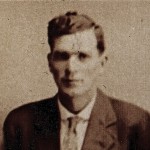 War I, would most likely have been very slow in coming. The death could come weeks before the notification. Just knowing that your child has been dead for that long and you are just finding out, would be enough to tear your heart out. That was quite likely the way things were for William and Theresa Spencer Davis. The news likely came by way of a letter. My guess is that even though Henry’s commanding officer tried to be kind, his words felt like a knife in their chest. It was likely very hard to breathe. Life would never be the same for them either, because their son had been killed in action. In the end, William and Theresa would also bury several other children before their own deaths. I can only imagine how awful that must have been.
War I, would most likely have been very slow in coming. The death could come weeks before the notification. Just knowing that your child has been dead for that long and you are just finding out, would be enough to tear your heart out. That was quite likely the way things were for William and Theresa Spencer Davis. The news likely came by way of a letter. My guess is that even though Henry’s commanding officer tried to be kind, his words felt like a knife in their chest. It was likely very hard to breathe. Life would never be the same for them either, because their son had been killed in action. In the end, William and Theresa would also bury several other children before their own deaths. I can only imagine how awful that must have been.
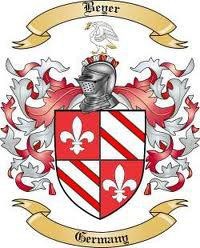 In the middle of the 18th century, Germany was a country that had been floundering due to European politics for more than a hundred years. At that time, France, England, and Spain largely had control of the continent because of their military might. The German states, on the other hand, were left to their own devices, and each leader was running his state for his own gain, without concern for the people or the nation as a whole. As a result of all the political greed, Germany was a nation that was going to quickly go under or eventually succumb to the greed around it and become an evil dictatorship, and no help was coming. It was in this Germany, at this time in history that my 6th Great Grandfather, Philipp Beyer (a name that would later be Americanized to Byer) and his wife, my 6th Great Grandmother Maria, were a young couple with a small son…my 5th Great Grandfather, Johann Beyer.
In the middle of the 18th century, Germany was a country that had been floundering due to European politics for more than a hundred years. At that time, France, England, and Spain largely had control of the continent because of their military might. The German states, on the other hand, were left to their own devices, and each leader was running his state for his own gain, without concern for the people or the nation as a whole. As a result of all the political greed, Germany was a nation that was going to quickly go under or eventually succumb to the greed around it and become an evil dictatorship, and no help was coming. It was in this Germany, at this time in history that my 6th Great Grandfather, Philipp Beyer (a name that would later be Americanized to Byer) and his wife, my 6th Great Grandmother Maria, were a young couple with a small son…my 5th Great Grandfather, Johann Beyer.
Germany was quickly becoming a place that was either going to fall apart or be controlled  by it’s own evil leaders. Either way, Germany had become a place where my 6th Great Grandparents could no longer afford to raise their family, so they made the decision to immigrate to Russia, which at that time in history was a better choice. I can’t even imagine how they must have felt, as they were leaving the country they loved, and moving to an unknown situation in an unknown country. Russia must have ended up being a good decision, because the family would live there for the next five generations, before my Great Grandfather, Cornelius George Byer, would make the decision in 1874 to immigrate to America, once again in search of a better life and to get away from a government that was quickly becoming extremely evil.
by it’s own evil leaders. Either way, Germany had become a place where my 6th Great Grandparents could no longer afford to raise their family, so they made the decision to immigrate to Russia, which at that time in history was a better choice. I can’t even imagine how they must have felt, as they were leaving the country they loved, and moving to an unknown situation in an unknown country. Russia must have ended up being a good decision, because the family would live there for the next five generations, before my Great Grandfather, Cornelius George Byer, would make the decision in 1874 to immigrate to America, once again in search of a better life and to get away from a government that was quickly becoming extremely evil.
It is a sad thing when a government becomes so evil that you feel like you must immigrate to another country in order to save your children from the tyranny of your own country. Like it or not, that is what many people had to do and still have to do in order to protect  their children. The move to America would be the best thing my great grandfather ever did. Once here, they were able to get a homestead that belonged to them, and was not subject to confiscation by an evil government, and more importantly, their children could not be taken away by the government to be raised as it saw fit, and become as evil as it was. It does make me very thankful that my grandfathers were wise enough to know when it was time to simply cut your losses, and get out…before their evil government made it impossible to leave.
their children. The move to America would be the best thing my great grandfather ever did. Once here, they were able to get a homestead that belonged to them, and was not subject to confiscation by an evil government, and more importantly, their children could not be taken away by the government to be raised as it saw fit, and become as evil as it was. It does make me very thankful that my grandfathers were wise enough to know when it was time to simply cut your losses, and get out…before their evil government made it impossible to leave.

